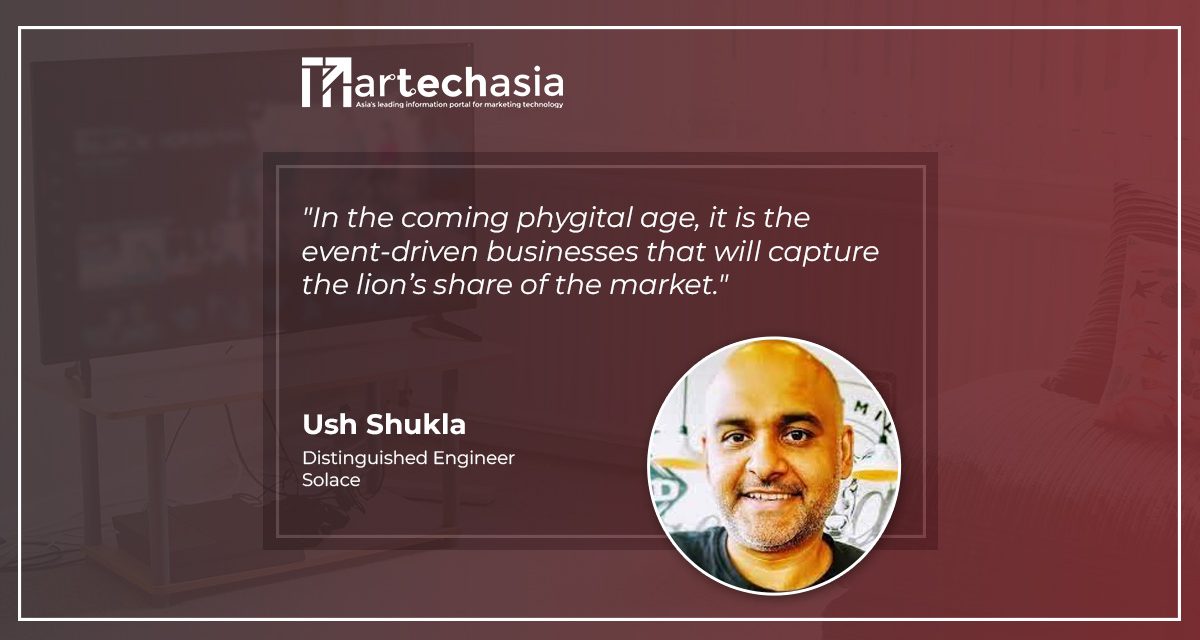How event-driven architecture can enable businesses to deliver true omnichannel excellence
The global challenges of the last two years have undeniably forced businesses in the retail sector to pivot and digitise rapidly to stay afloat. However, retail customer journeys were already on the trajectory from physical to digital in pre-pandemic times. In fact, e-commerce revenue already made up more than 20 percent of total retail sales in the Asia Pacific (APAC) region in 2019 itself.
Now with online retail revenue for APAC projected to hit $2.5 trillion by 2024, retailers have even greater impetus to digitise their products and services. Yet, the truth is that online is not the end-all and be-all either. Globally, in-store sales are now even higher than in 2019, and have rebounded by 8.9% since 2021.
The result is a pressing need for retailers to ensure they can provide a unified, consistent and real-time experience for customers, regardless of their location and channel of choice – truly achieving “omnichannel excellence” and putting customers at the centre of every transaction.
Retailers’ response to market pressures
The ripple effect of the pandemic has been felt throughout the retail sector. With the advent of e-commerce, traditional retailers that typically rely on physical stores and in-person service delivery were particularly hard-hit – such as in India, where mom-and-pop stores dominate the nearly $900 billion retail market. Additionally, labour shortages and supply chain issues exacerbated by the pandemic have also contributed to a plethora of challenges, from stocking issues to support warehousing and distribution operations.
Retailers have been quick to respond with innovations and enhancements to their services, to bolster sales. According to a 2021 Global Retail Industry Digital Transformation study by Fujitsu, retailers are already investing in better understanding and serving their customers. Priority investments include combining their online and physical presence; monitoring customer traffic flow and predicting movement; enhancing the customer experience; and recommending and marketing products and services.
Obstacles to achieving true omnichannel excellence
While retailers are embarking on these digital transformation journeys, data shows that
44% of retailers remain concerned with how lack of real-time data can lead to decisions made on inconsistent or outdated information. Further, 65% recognised the benefits of real-time data for their business operations. To succeed, retailers must unify data from all channels that may be scattered across point-of-sale, eCommerce, ERP and other systems.
Many retailers are also hindered from delivering an exceptional customer experience and offering a truly omnichannel service because of legacy systems, poor integration of ad-hoc applications, and delayed or inaccurate notification of significant data events. Without integrating all the disparate data and making it available to other applications in real-time, it will be near impossible to deliver a fully-connected omnichannel customer experience.
How event-driven architecture powers real-time retail
A seamless retail experience must cross the whole business: employees, suppliers and customers. After all, they all do something different with the data, which therefore requires a different software architecture paradigm approach to moving data – event driven architecture (EDA).
Every retail transaction creates data, such as the product purchased, price, and customer name. Software developers call that transaction an “event.” Other events may include customer purchases on a mobile app; online returns; facial recognition of a VIP client entering a store; staffing disruptions; detecting a vehicle arriving for click and collect; or the last of inventory being purchased.
Real-time streaming of these events across an organisation is a fundamental tenet to omnichannel success – ensuring the continuous processing of real-time data directly as it is produced. This requires integrating all touch points within the retail ecosystem – from physical stores, IoT applications, eCommerce platforms, warehouses, to the headquarter itself – to be able to both receive and transmit information in real-time. Adopting an EDA approach meets this need by unifying retailers’ physical and digital operations to provide a synchronous 360° view of customers, inventory, and the entire supply/value chain.
Underpinning the meta-driven future of retail
Looking further forward, EDA and real-time event streaming will play a huge role in underpinning the meta-driven future of retail – where the digital and physical worlds increasingly combine in new and exciting ways.
Imagine a retailer being able to “store forward” inventory data, especially applicable for stores in some of the most remote and disconnected locations where connectivity interruptions cause issues in reconciling stock levels to meet customer orders. Suppose these stock events can be stacked on the edges of networks to provide regular updates to stores and customers to notify them to take alternative action to get the product they want.
With perishable goods, consider IoT-enabled heat lamps at hot food counters. By linking expiration data to an analytics engine, event-streaming can notify stores the moment food should be removed from the shelf. Such use cases could eliminate massive losses, especially in markets like India where grocery retail accounts for $608 billion. There is also the potential for fully-connected price stickers. These digital price tags could take into account events being generated across a product’s supply chain to amend in-store prices in real-time.
Then, we have the power of push notifications. As we blend the physical and digital worlds and integrate with customer habits, real-time event streaming offers retailers the ability to target customers who may have looked for a product online but left it abandoned in their cart. Linking location data with customer behaviour, stores could send real-time push notifications to customers using their retail apps, if at some point a customer walks past a store that contains stock for the item that was previously left behind.
It is evident from these and other common retail scenarios that EDA serves as the necessary digital backbone for improved omnichannel experiences, helping retailers realise significant cost savings, optimise supply chain efficiencies, and strengthen customer loyalties – all of which ultimately lead to greater revenues and profitability.
True omnichannel experience will separate retail leaders from laggards
Ultimately, the retail landscape is quickly evolving and retailers that build capabilities to operate in real-time across both physical and digital channels will develop a competitive advantage over those who do not.
In the coming phygital age, it is the event-driven businesses that will capture the lion’s share of the market.


















